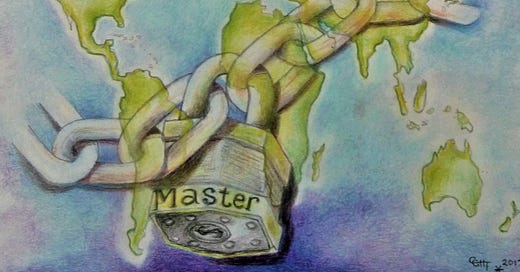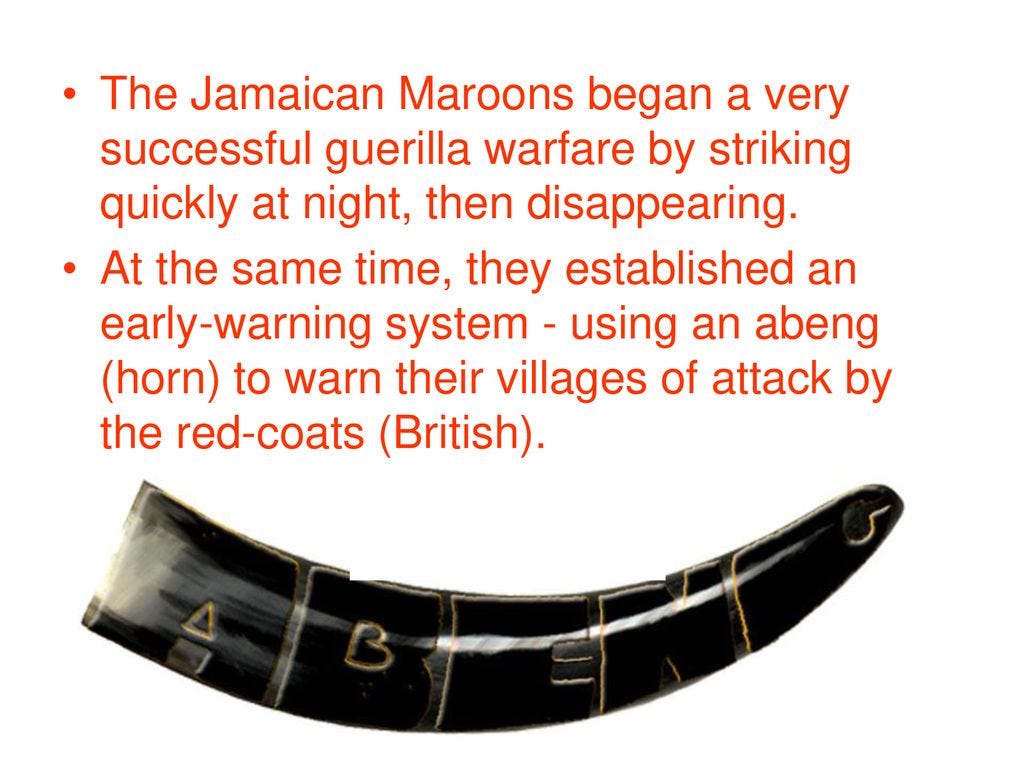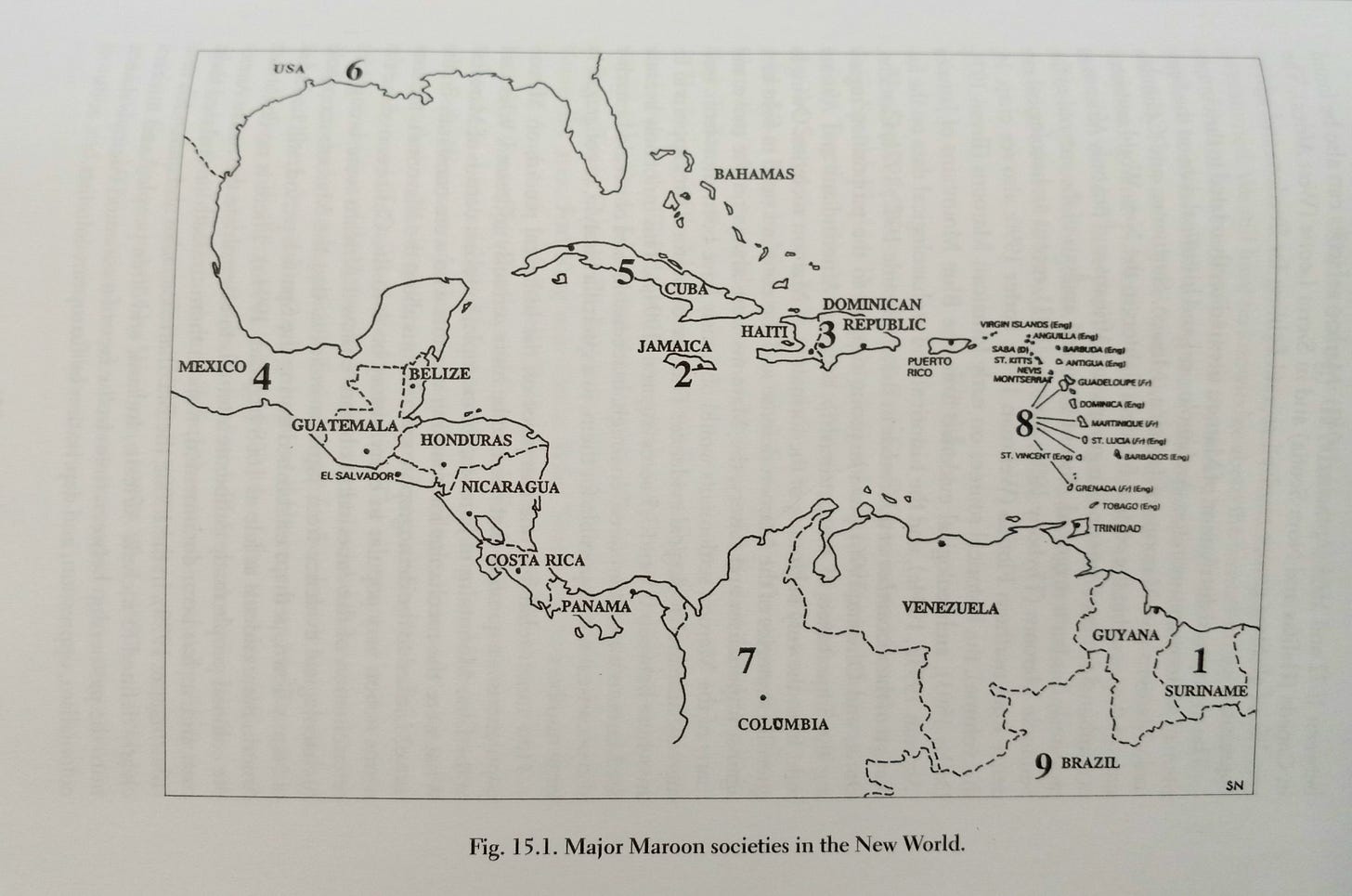Let’s start in the South with Brazil and the Portuguese; then to the Spanish speaking countries of South, Central and North America, and lastly, to the United States, we find these Communities of Resistance. Each language group had these escapees or runaways. I’m not sure there’s an accurate estimate on how many there were but, these communities were formed in the spirit of Extreme Necessity. Do they still exist? And, where are the surviving descendants? Let’s look at the definition of Maroon. It comes from the Spanish word Cimarron, meaning “wild runaway slave” or “living on mountaintops.” Remember not All Maroons were Africans and many times these people were taken in by the Indigenous of that particular area of the country. In the Twi language, spoken in Ghana, it means “Children of the Almighty.” It seems as though they must have been “Children of the Almighty” to have existed for generations in the areas they fled to claimed and defended. Some, exist even up until today. Some maroon groups have been re-classified by description to other names and definitions throughout U.S. History. One of perhaps the most well known are the Maroons of Jamaica. There are 4 communities stretched across the island in the Blue mountains. Bauxite is a major component of aluminum and has been mined in Jamaica for generations. In Accompong and the Cockpit country specifically, there is a great dispute over mining, primarily because its bi-products are killing the people. Well, in history Europeans and Arab muslims have ravaged the indigenous people of Africa and other places, for their land and geological resources. Some notable leaders of these rebellious communities were Queen Nanny and some say her brother Kojoe in Jamaica; Zumba and Zumbi in Brazil; Yanga in Mexico; Benkos Bioho in Columbia, S.A.; Dutty Bookman and Cecile Fatiman in Haiti; John Horse of the Florida Seminoles; Jean St. Malo of New Orleans, here in the U.S. There are undoubtedly other Maroon societies elsewhere in the Americas and anywhere in the world “Chattel Slavery” was practiced. No Man (Woman or child) wanted to be a Slave; because of this, there will always be those who resist, rebel or just run. Most of us were taught that there were several Slave revolts in the U.S. and nothing more about the others we are close neighbors with. In the New World, we now find there were hundreds, if not thousands over a 3 hundred year period. Imagine that …. Happy history hunting.
More References Below
Akan Chief’s seat of Ghana This ceremonial seat of office was once the prized possession of an Akan chief in the present-day country of Ghana. Its form exemplifies the "classical" Akan stool used as an icon of leadership throughout this region: a curved seat is supported by four slightly bowed legs and one openwork column, all raised on a stepped platform. Carved from a single piece of wood, these stools often display elaborate inlaid metal decorations or, as in this example, incised geometrical designs. The unusual five-legged form is referred to as kontonkrowie, or "the circular rainbow." It evokes the Akan proverb "the rainbow is around the neck of every nation," calling to mind the king's role in uniting and controlling the kingdom. On a more literal level, the five supports evoke the Akan model of statecraft (one king surrounded by chiefs) and the cosmos (the four cardinal points and central sun). Stools are sometimes also discussed in anthropomorphic terms, with the support described as the "neck" and the seat termed the "head" or "face."
Please go to the site below, to view seat image. The above info is an excerpt from the Metropolitan Museum’s description.
https://www.metmuseum.org/art/collection/search/314978 Contemporary Ghanaian design of a Chief’s seat (year unknown)
20th-century Saramakan seat designs (Not Chief seats) Genetic memory?
the above pictures are from Sally and Richard Price’s book MAROON ARTS Cultural Vitality in the African Diaspora Beacon Press Boston Abeng and Tutu
Jamaican and Saramakan Maroon similarities
The above map is from the book Archaeology of Atlantic Africa and the African Diaspora edited by Akinwumi Ogundiran and Toyin Falola Indiana Press Bloomington and Indianapolis
I’d love to hear from you. Comment below with any questions or any other information you may know to add to this, please share!
Adinkra, for now. Peace.










